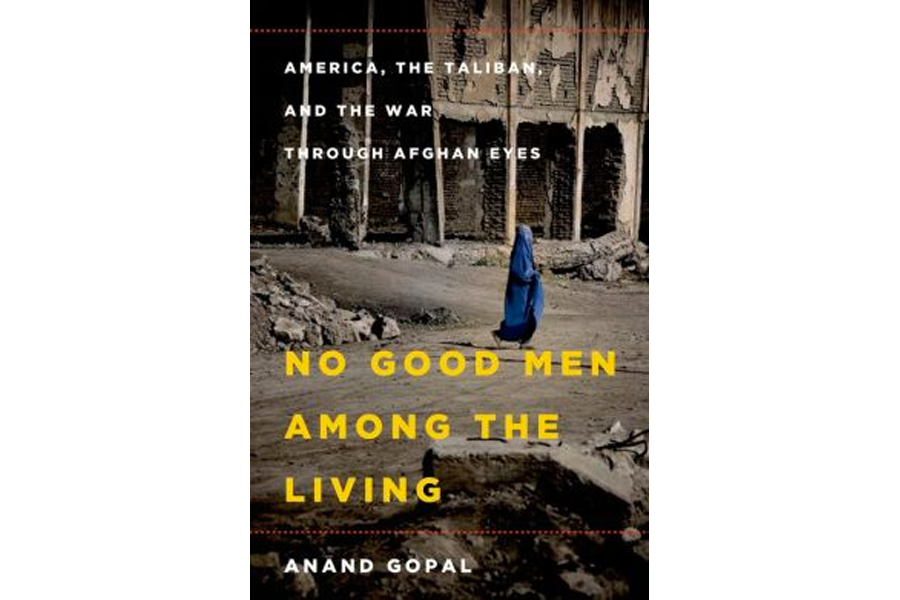'No Good Men Among the Living' chronicles the war in Afghanistan from the perspective of the country's citizens
Loading...
In 2007, mired in University of Pennsylvania’s theoretical chemistry doctoral program, Anand Gopal decided to leave it all behind, move to Afghanistan, and become a journalist. With no writing experience, no contacts, and little money, he lived in a cheap guesthouse on the fringes of Kabul. In the winter the plumbing froze, rendering all bathrooms out of service until the spring thaw.
Unable to afford translators, he quickly learned Dari and assimilated into Afghan culture. Necessity may have birthed Mr. Gopal’s immersion, but it introduced him to Afghanistan without any filters.
Seven years later and well into a successful journalism career, it’s hard not see Gopal’s humble beginnings and the perspective they provided reflected in his first book. In No Good Men Among the Living, Gopal takes readers beyond the familiar accounts of the Afghan war through the eyes of American soldiers or Western reporters. Instead, he chronicles the war from an Afghan perspective, resulting in one of the most unique Afghanistan books to date.
Gopal, who covered Afghanistan for The Christian Science Monitor and The Wall Street Journal, crafts the narrative core of his book using the lives of a housewife, a Taliban commander, and an American-allied warlord. Through their stories, he offers readers a lucid account of how US strategy inadvertently contributed to destabilizing the country and creating a Taliban resurgence. Often reading like an adventure novel, "No Good Men Among the Living" is certain to appeal to Afghan-ophiles and casual readers alike.
The characters introduced by Gopal are by far the most memorable aspect of the book, particularly the Taliban commander and housewife. Readers meet these characters as Afghanistan falls into civil war following the Russian withdrawal. During this period, Akbar Gul watches corrupt militias rape, murder, and steal with impunity until he feels driven to join the Taliban, the only group he sees as capable of restoring order to his country. Despite his good intentions, he embraces the organization’s trademark brutality, earning the nickname Mullah Cable in reference to his propensity for lashing those who fall out of step.
Gopal manages to cast an empathetic light on Akbar Gul and other Talibs without sparing readers from their misdeeds. The portrait he paints is refreshingly complex and thought-provoking, especially compared to the Manichean language often used to describe the group. By affording the Taliban an element of humanity, Gopal makes it possible to better understand their motivations and how they fit into Afghan society.
Heela, an Afghan housewife, grows up in a relatively progressive family in Kabul before marrying a man who supports her ambitions to work outside the home. When circumstances drive the couple back to the rural Uruzgan province, Heela struggles to adapt to a traditional lifestyle in the countryside, confined to the house. The outsider’s experience and reactions to village life give Gopal space to reveal the intricacies of the world outside Afghanistan’s cities and what it takes for an individual to rise above them.
Gopal’s book also sheds light on an oft-forgotten chapter of the war when American and Afghan officials ignored the Taliban’s attempts to surrender and reconcile immediately after the group’s fall from power. Driven by America’s fixation with stamping out terrorism, Gopal makes a strong case that US troops found enemies where there were none and allowed opportunistic Afghan strongmen to lead them astray. Coming on the heels of the Soviet war and the Afghan civil war, Gopal explains how these missteps caused the American presence to decimate traditional Afghan power structures and usher in chaos that continues to challenge US efforts.
One of the book’s few defects comes near the middle when Gopal strays from the narrative of his three central characters. Although the section provides sharp insights into how Afghanistan unraveled following the American invasion, the diversion creates one of the few stretches where it’s possible to put the book down. Still, even as he loses track of the main storyline, Gopal shares valuable information and a number of memorable anecdotes. Anyone who wants to understand why the US has struggled in Afghanistan is bound to find this section worthwhile, if slow-moving.
"No Good Men Among the Living" distinguishes itself among the cavalcade of books published about Afghanistan over the last decade. Gopal offers a unique perspective, an essential examination of policy, and a rock-solid narrative that ensures this will be one of the few books people still read years from now when they want to understand America’s war in Afghanistan.
Tom A. Peter covered Afghanistan for the Monitor from 2010-2012 and is currently a Robert Novak Journalism fellow.







